My Latest Design—How it Unfolds
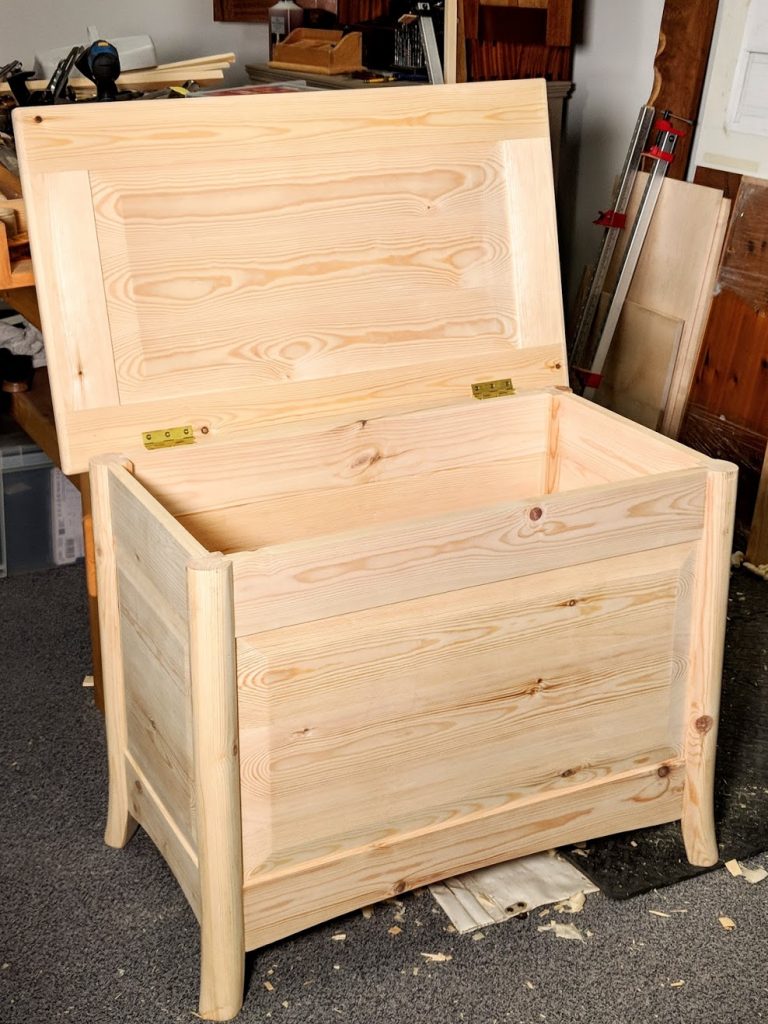
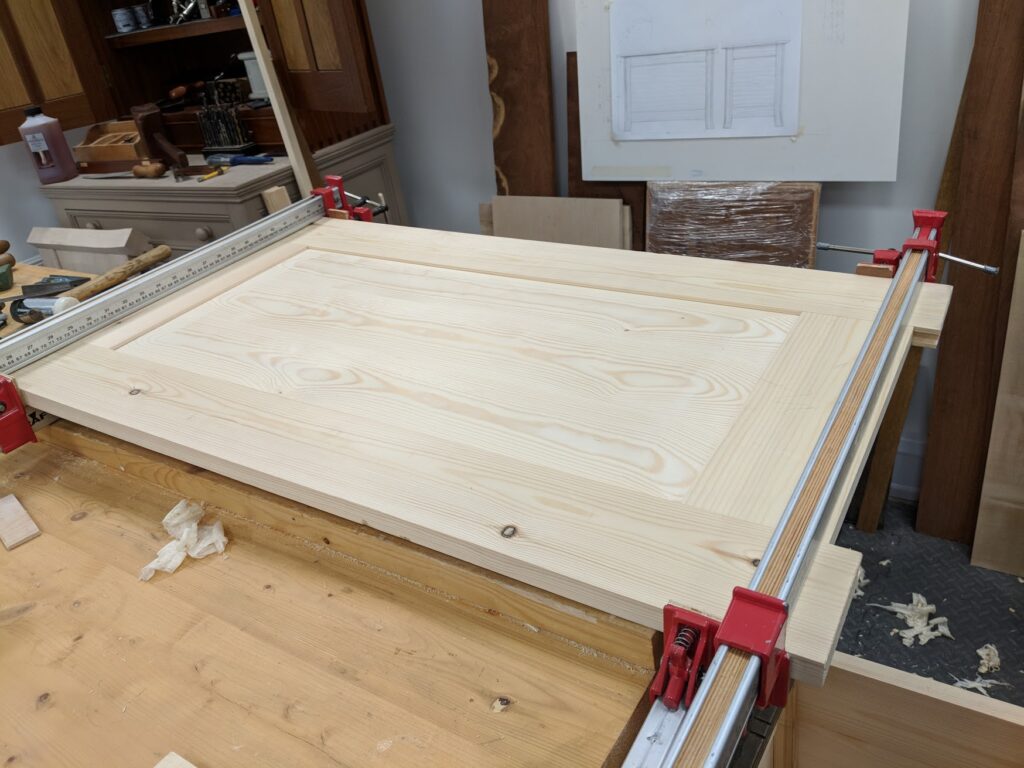
This is how my designs come. They are new and they are all mine but I am influenced by things I have seen and especially is this so when i liked it. It’s all to do with syntax in the brain, neurones streaking and streaming through the channels of the brain to convert a vision into reality. Before many seconds more have passed i consider the joints, size them, discuss them considerately by speaking to myself. I don’t talk to other people for general discussion because then i must explain all that’s contained in my design but my design, not the one I saw somewhere else, is still unfolding, it’s emerging, I’m committing thought to paper quickly,scribbling a note, making sure not to forget even the most minute detail.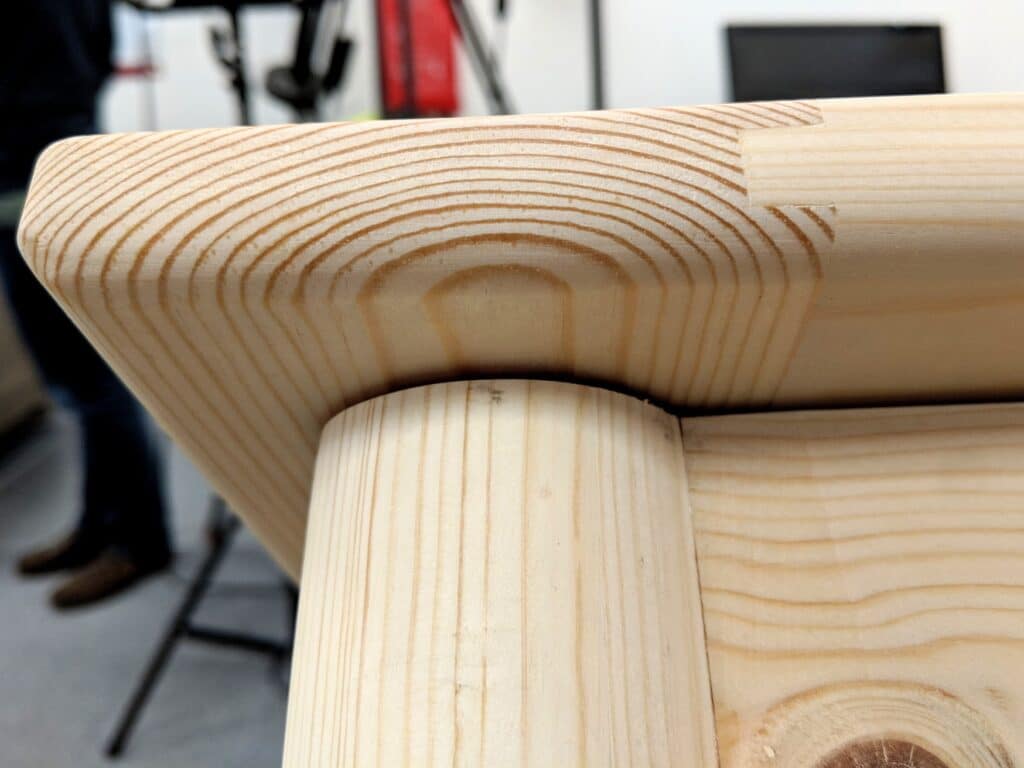
An hour passes and a drawing is down. I run to the merchant to buy pine and the build begins. I draw more as I go, make slight shifts, alterations to make sure the integrity of the joints are never compromised. The prototype tests the efficacy but the piece still gets finished to a saleable level. My customer comes, sees the work and understands the design. Then the real work begins. Yes, it’s much more expensive than a mere computer drawing, but now ~I have an additional piece to sell. 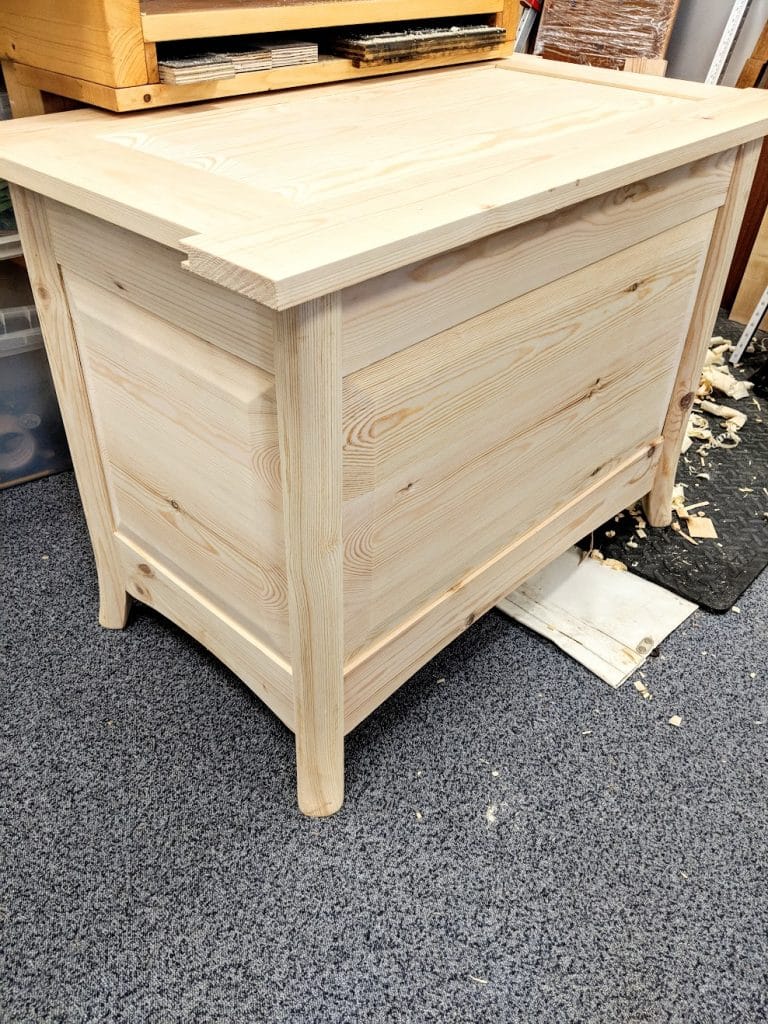
Of course every piece of work I ever sold was sold by a drawing I did with the customer there. For filming it is very different. Hand work is more demanding than machine work and more skilfully executed. Even my prototypes matter because they reflect the patterns and templates I will work to in three dimensional reality. It’s not so much for me to rehearse the work but to be able to show the film crew where I will be going as we shoot the videos. the difficult-to-see shots must be done another way. They look to see what will add the exact rightness in angles to an almost invasive level so no one watching is taking anything for granted.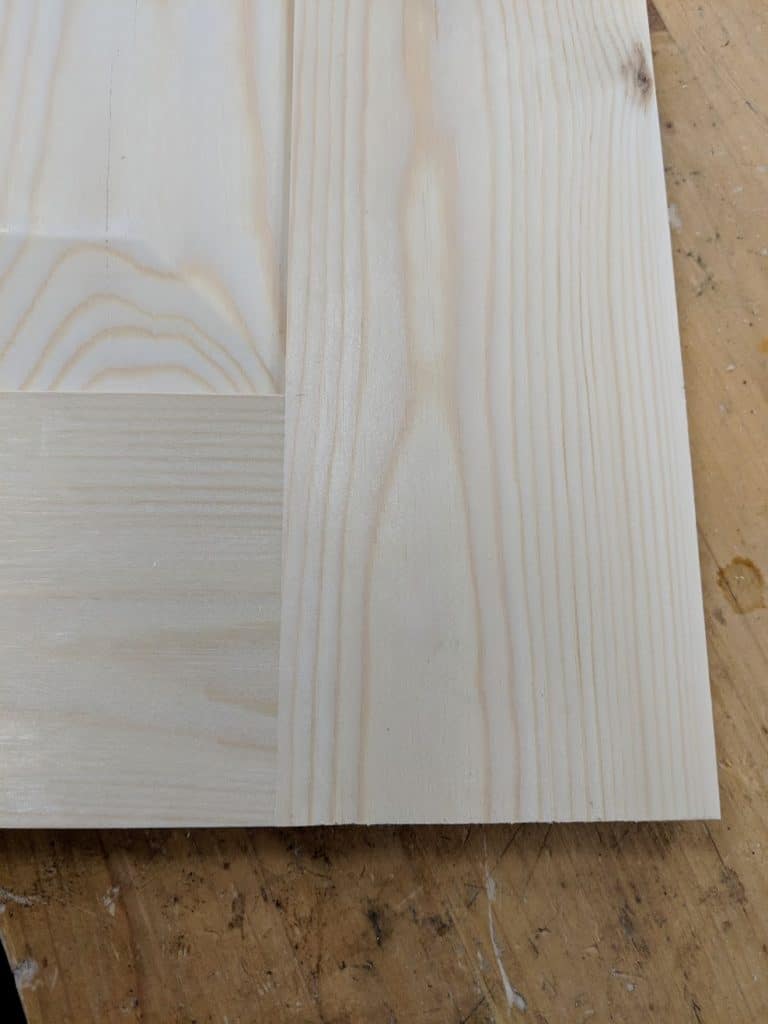
So this chest unfolded with a kick to the legs and angles that look difficult but are not difficult at all. Shaping needs no machine, grooves come from what might now be called vintage planes in minutes per piece and mortise and tenons, well, what can I say. The knifewall methods I teach and my own system I developed gives joint shoulder lines like these every time.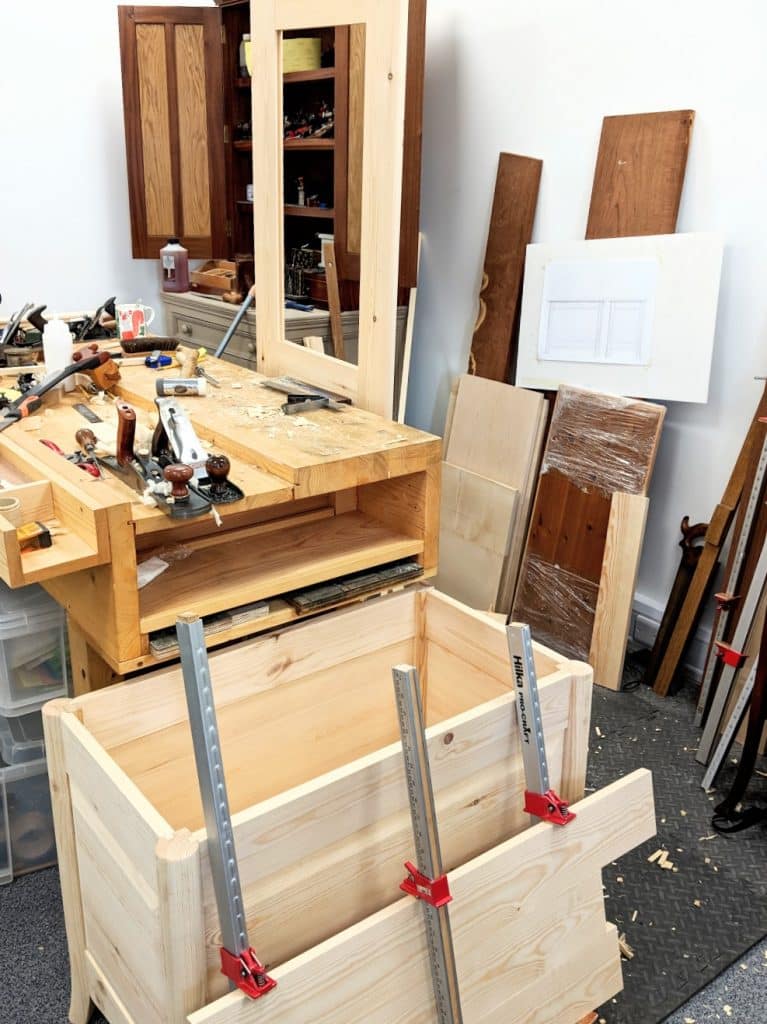


I am curious as to what pieces you have made for customers. Do you have a gallery of photos you could share? Perhaps with a few captions. It would be really cool to have book of drawings juxtaposed with finished pieces all made by Paul Sellers. It would be something I would enjoy having and would be eager to purchase.
One highlight was designing two credenzas for the Cabinet Room of the Whitehouse for President Obama’s Inauguration delivered January 2009. I enjoyed that one. The best thing I ever made was a cello with my son for my son.
I am curious to know how you ended up making those pieces for the White House. Did they approach you directly or a third party, or did you win the contract to make the pieces through an open tender process? Or did you make an unsolicited proposal to the Obama team?
I don’t think you have ever shed any light on that. Thank you.
I noticed a neat ladder (book?) shelf system in the background on one of your recent videos last week. Coincidentally, a few days later my wife opined that a ladder book shelf system (in the current Cotswold catalogue, nice enough but not as nice) would fit a particular corner with an awkward light fitting in our home. Any chance that this will be the subject of a video in the near future?
It was a series on woodworkingmasterclasses a few weeks back.
Dear Mr Sellers. My sons and I love your videos. My youngest is 8 yrs old and desires his first set of wood chisels (he only uses mine under direct supervision of course). I hope I’m on the right track with my boys and find your words to be inspiring as a father.
Looks great Paul I was looking for something like this to go in my beach hut.
It’s interesting to read how a design that lodged in the grey matter years ago can be brought to life as you describe. My projects and processes follow a similar route. Things such as a moulding or a chamfer applied sensitively on a particular piece can lift the design and stick in your mind.
Most things that I’ve made have started out with a sketch, but on the road to the finished article many things can happen – including mistakes – to cause me to modify the design. Although this is frustrating at times, to me it’s also part of the pleasure of working with wood. There’s no straightjacket restricting you; your design can evolve in the making.
Awesome.
Use something similar…sans paper. Known as The Infamous Single Brain Cell Sketch Up…..Currently working on a second Stepback Cupboard….raised panels were done like yours, except I lay the panel flat on the bench. The main Stanley No.4c that I use for raising panels was made in England.
Paul,
Reading about your design process I am struck by the similarities to the composing process of music. I’m not sure if all creative processes can be lumped this way, but with music composition the similarity is uncanny. I can’t wait to see this on WWMC and start the build.
PR
Hi Paul,
I understand what you mean. Im in Australia and consider myself a long term machinist, but in finishing the drawers for a new mitre saw station I built I picked up my old Stanley #4 to flush the drawer tops with each other and had forgotten what a thing of beauty hand planing wood is. Since then I’ve bought a few different planes. My latest a Stanley #55 in almost mint condition arrived today. Looking forward to many years of woodworking ahead.
Once I finish my bench, my next project will be a spin on this. I want to mix this with the bedside cabinet to make something to set my printer on.